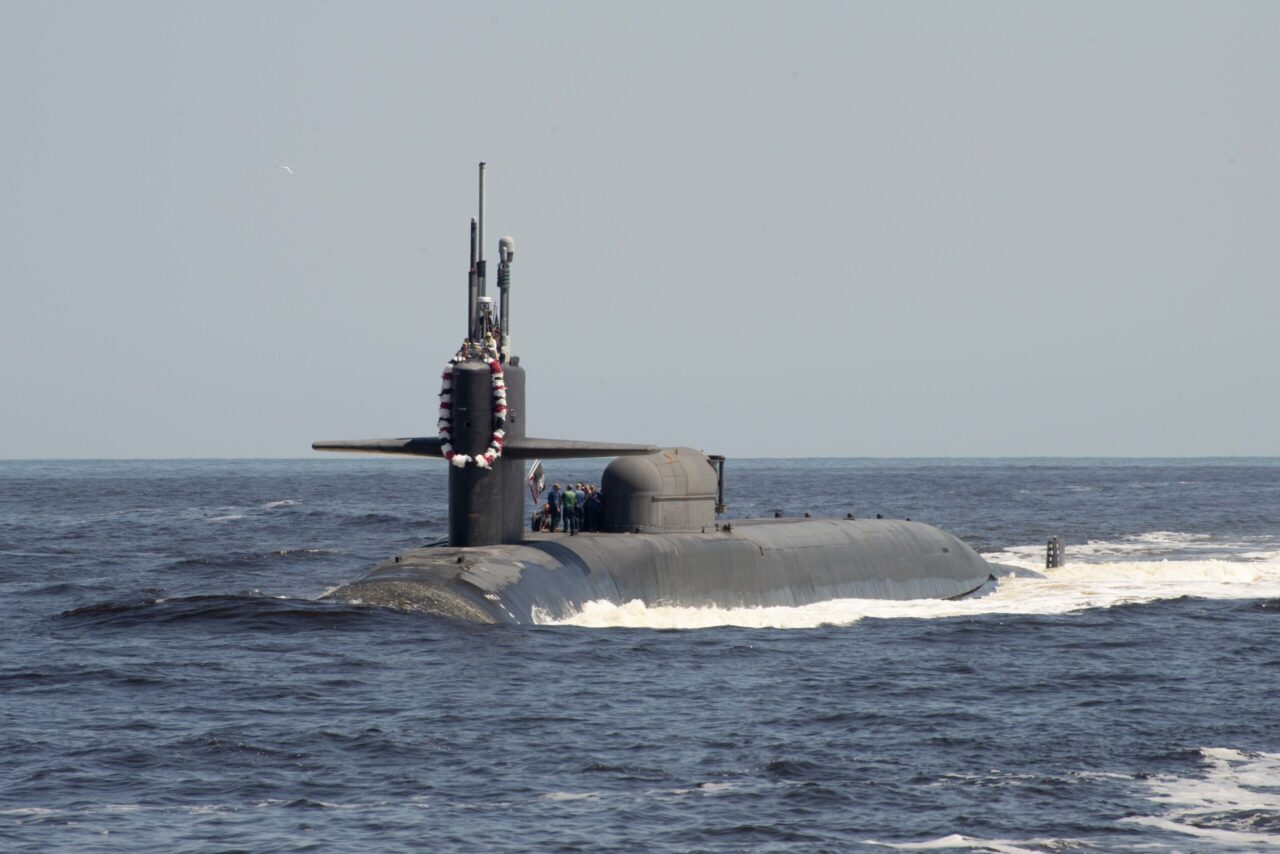
Will the First Columbia-class Submarine Set Sail on Time?
The Columbia-class submarines are meant to serve as more advanced replacements for the Ohio-class.
Despite massive delays impacting nearly all of the US Navy’s upcoming projects, there appears to be progress concerning the Columbia-class ballistic missile submarine. Earlier this year, BAE Systems was awarded an additional $11.5 million contract to develop a “sequence critical heavy structure” for the service’s next-generation submarine-class. Also known as the Ohio Replacement Submarine and the SSBN-X Future Follow-Up Submarine, the nuclear-powered class is expected to lead the Navy’s underwater fleet sometime in the early 2030s. BAE was previously awarded a $72 million contract to manufacture other components for the submarine class.
According to BAE’s submarine programs for platforms and services director, Charles Lewis, the bulk of the work will take place at the company’s facility in Louisville, Kentucky, and partly in another facility in Jacksonville, Florida. “Our personnel and facilities have the deep specialized capability and experience needed to support submarine and maritime industrial construction. We look forward to carrying on our commitment to meeting the production needs of these national security assets that keep our Sailors safe,” Lewis said.
When the Navy begins retiring its existing Ohio-class submarine fleet at a rate of one per year beginning in 2028, its Columbia-class successors are meant to serve as more advanced replacements. Manufacturers Electric Boat and Newport News Shipbuilding are jointly working to field one dozen Columbia submarines, with Electric Boat acting as the prime contractor. Newport News is tasked with engineering analysis, detail planning, and the development of components for the upcoming platform. While the Columbia vessels are set to possess eight fewer missile tubes than their Ohio-class predecessors, the new submarines will certainly not be lacking in terms of lethality. In fact, when the Columbia subs are officially introduced to service, they will arguably represent the most powerful vessels of their kind in the waters.
Specifically, the Columbia submarines will all be equipped with 16 missile tubes for launching the newest Trident II D5 submarine-launched ballistic missile variant. The three-stage, solid-fueled submarine-launched intercontinental-range ballistic missile has a range of 12,000 km and can carry a payload as large as 2,800 kg. As detailed by the Center for Strategic and International Studies, “Its payload carries a Post-Boost Vehicle (PBV) which can carry up to 12 Reentry Vehicles (RVs), though New START limits the number to eight. These RVs can be either the Mk 4 with a W76 100 kT yield warhead or the Mk 5, which has a W88 475 kT yield warhead.”
In addition to this unmatched armament capability, the Columbia submarines will also run more smoothly. The class will be powered by electric drive rather than the reduction gearing and mechanical drive systems previously used to power earlier nuclear-powered vessels. Notably, this drive system is much quieter than the mechanical variant, which will help the Columbia submarines remain undetected for longer periods while underway.
On paper, the Columbia-class certainly appears to be unmatched in terms of expected capability. However, budgetary issues and other roadblocks could further impact the timely introduction of the platform.
About the author: Maya Carlin
Maya Carlin, National Security Writer with The National Interest, is an analyst with the Center for Security Policy and a former Anna Sobol Levy Fellow at IDC Herzliya in Israel. She has bylines in many publications, including The National Interest, The Jerusalem Post, and The Times of Israel. You can follow her on Twitter: @MayaCarlin.
Image: DVIDS.
The post Will the First Columbia-class Submarine Set Sail on Time? appeared first on The National Interest.

















